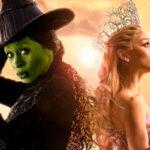

Since its debut in 1976, “Carrie” has captivated audiences with its chilling narrative and iconic performances. Directed by Brian De Palma and based on Stephen King’s novel of the same name, the film not only established itself as a horror classic but also inspired a legion of devoted fans. However, behind the scenes of terror and suspense, there’s a world of fascinating trivia and details surrounding the making of this iconic movie. In this exploration of the behind-the-scenes curiosities of “Carrie,” we’ll uncover secrets, trivia, and surprising facts that have contributed to its status as a genre masterpiece.
1 – STEPHEN KING´S FIRST BOOK
It is widely known that “Carrie” was Stephen King’s first book and a major success. Many have heard the story of how Tabitha King rescued the manuscript from the trash, where the master of horror had discarded it for not appreciating its content. At that time, King was already writing short stories and pieces for smaller circulation magazines, but it was “Carrie” that marked the beginning of his acclaimed career.
However, a lesser-publicized part of this story is that, at the age of 26, King received a mere $2,500 for the sale of the rights. Nowadays, this amount seems insignificant. At that time, while it was an interesting sum for a young writer, it was still below expectations.
Nevertheless, King expressed gratitude for this experience with his first book. During an interview in 2010 in Port Charlotte, Florida, King commented on his luck in getting an adaptation for his first book.
2 – EXPERIENCED DIRECTOR
Unlike the common procedure of major studios, which typically select directors for their films, it was Brian De Palma who took interest in “Carrie”. He was introduced to the story of Carrie White by a writer friend as early as 1975, just a year after the book’s release in the United States. De Palma immediately became intrigued by adapting the story for film and managed to locate the copyright holders.
By that time, the filmmaker had already directed several shorts and feature films such as “Sisters” (1972), “Phantom of the Paradise” (1974), and “Obsession” (1976). However, these films had relatively modest budgets, mostly financed independently. Despite his previous films being well-received by critics and profitable, “Carrie” stood out as a major success.
Following “Carrie” and a few other successes that garnered reasonable critical acclaim, De Palma solidified his career as an acclaimed director with “Scarface” in 1983.
3 – THE SCREENPLAY
Tasked with adapting King’s book for De Palma’s film was Lawrence D. Cohen. At that time, Cohen was relatively new to the film industry and had only two screenplays to his credit before “Carrie”: “Sedgewick Hawk-Styles: Prince of Danger” (1966), a television film directed by William Asher, renowned producer and director of series such as “I Love Lucy” and “Bewitched”; and “Italianamerican” (1974) by Martin Scorsese, a documentary where the director interviewed his parents about their lives as immigrants in New York.
However, “Carrie” seems to have injected new energy into Cohen’s career. Following this work, several other adaptations of King’s works were added to his portfolio. Among them is the adaptation of the 1990 miniseries “It – A Masterpiece of Fear”.
In addition to Stephen King’s works, Cohen also wrote the screenplay for the adaptation of Peter Straub’s “Ghost Story”, a close friend of the master of horror, which was released in 1981.
4 – CHOOSING THE PROTAGONIST
Selecting the protagonists for film adaptations always involves a meticulous process. The portrayal of the character Carrie White diverges slightly from the book, where she is described as overweight, with pimples on her neck and back, as well as an oily face with blackheads.
When comparing the image we have of Carrie in the 1976 film, some of these characteristics are lost. However, the choice of Sissy Spacek to play Carrie White seems more than fitting, as she brought the character from the book to life with all the intensity the character deserved.
However, Spacek was not De Palma’s first choice for the role of Carrie White. Betsy Slade, who had received praise for her role in the film “Our Time” (1974), was the favorite to play the protagonist. But Spacek’s husband, production designer and director Jack Fisk, convinced De Palma to allow Spacek to audition for the role of Carrie. It is said that Spacek was determined to get the part, arriving at the audition with her hair covered in vaseline, her face dirty, and wearing a sailor dress her mother had made for her in seventh grade, with the hem unfinished. Spacek’s presence and performance convinced De Palma and the rest of the production team, and the actress ended up getting the role.
After “Carrie,” Spacek would return to star in a production based on a Stephen King work in the series “Castle Rock.”
5 – ACTRESS BELIEVED IT WASN’T A HORROR FILM
Until her death in October 2023, Piper Laurie remained convinced that “Carrie” was actually a cinematic satire, an absurd comedy. When chosen to play the role of Margaret White, the actress simply couldn’t take herself seriously while reading her lines and wearing her costume.
Amid fits of laughter, she expressed that she found everything very “over-the-top” and was certain that no one would take it seriously. Even after De Palma personally talked to her and explained that it was a horror film, Laurie still couldn’t believe that her role would terrify anyone.
Similarly, John Travolta and Nancy Allen, who portray the two main antagonists of the story – Billy Nolan and Chris Hargenson – had no idea of the true malice of their characters until they watched the final versions of the film. Allen commented that while they were filming, they thought they would be, in a sense, the comedic relief of the production. It was a real shock for them to see the complete film and realize that they were the main antagonists of Carrie White.
6 – REMAKES AND REBOOTS
“Carrie” has become a success and remains a major reference for horror fans to this day. Naturally, over the 48 years since the film’s release, many have attempted to replicate its success. The work inspired two remakes, a musical, and a sequel, but none of them managed to capture a solid fan base.
The first attempt was the musical “Carrie: The Musical,” in which Lawrence D. Cohen, the original film’s screenwriter, collaborated with composer Michael Gore to adapt the story of Carrie White for the Broadway stage. The play premiered in 1988 but did not survive five performances. Today, it is considered one of the biggest failures on the famous avenue of New York’s shows and theaters. Over the years, some fans emerged, and in 2018, the series “Riverdale” used the story as the basis for one of its musical episodes.
In 1999, they attempted to release a sequel titled “The Rage: Carrie 2,” although few remember the existence of the film. It cannot be said to have been a great success, but the production made an effort to bring Amy Irving, who played Sue Snell in the original film, for a special appearance. Directed by Katt Shea and Robert Mandel, the film follows the character Rachel Lang (Emily Bergl), who, like Carrie, possesses telekinetic powers.
In 2002, Bryan Fuller had the bold idea of turning “Carrie” into a TV series. The first episode would be a TV movie directed by David Carson and Angela Bettis in the role of Carrie. Although the production was well-received by the television audience, the series never materialized due to some changes in the ending that affected the resolution of the plot.
In 2013, at the end of the trend of remakes of successful films from the 1970s and 1980s, director Kimberly Pierce took on the project of a remake of “Carrie,” bringing Cohen back as a screenwriter and Chloe Grace Moretz as the protagonist. However, despite being conceived as a modern adaptation of King’s work, the film did not achieve the expected success.
7 – BUDGET AND BOX OFFICE
“Carrie” had a production budget of $1.8 million and grossed $33 million worldwide.
In summary, “Carrie,” released in 1976, remains a landmark in the horror genre, not only for its chilling narrative and memorable performances but also for the fascinating trivia and details that surround its production. From the initial casting choices to the subsequent attempts to replicate its success through sequels, remakes, and adaptations, the legacy of “Carrie” transcends the cinema screens. Even today, nearly half a century after its release, the film continues to intrigue and captivate a new generation of viewers, showcasing the enduring power of a well-told story and skillfully executed filmmaking. “Carrie” not only haunts the hearts and minds of those who watch it but also leaves an indelible mark on the cinematic universe, reaffirming its status as a true horror classic.








